






| Ornate Cow Tick (Dermacentor reticulatus (Fabricius, 1794)) |







|
|
Scientific name: Dermacentor reticulatus (Fabricius, 1794) Common name: Ornate Cow Tick Other names: Marsh Tick French name: Ixode réticulé Order: Ixodida Family: Amblyommidae Size: Males: 4.2-4.8 mm long; Females: 3.8-4.2 mm long and up to 10 mm long when engorged with blood. Biotope: Meadows, fallow lands, woodland edges, deciduous and mixed woodlands. Web: No web. Observation period: The life cycle generally lasts 1 or 2 years. Larvae and nymphs parasite small mammals and sometimes birds. Adults parasite large or medium mammals. There is a peak of activity between April and May and a second one between September and November. Geographic area: Europe, eastern Asia, from the Atlantic coast to Kazakhstan, central Africa. |
Ticks are bloodsucking parasite acari. There are 41 different species in France. Ticks of the Ixodidae and Amblyommidae families (Ixodina sub-order) are characterized by a hard shield on their back (so they are called hard-bodied ticks) and by an elongated forward roster. The life cycle has 4 stages. Larvae which live very close to the ground (up to 15 cm high), will parasite small animal during two or three days and will fall back on the ground to nymphate. Larvae have only three pairs of legs. You can find nymphs up to 50 cm above the ground. They parasite the same species as larvae, but during a longer time, from five to six days. Ticks have four pairs of legs since the nymph stage. You can recognize male adult ticks by their hard shield, or scutum, completely covering their back. It is only covering one half on a non engorged female. You can tell ticks of the Dermacentor genus apart with their rounded roster, as long as wide, and with their ornate dorsal shield showing white dorsal markings and festoons. There are two species of this genus in Europe, Dermacentor reticulatus and Dermacentor marginatus. Dermacentor marginatus (Ornate Sheep Tick) is more a southern species in France and rather parasites sheep when in its last development stage. Dermacentor reticulatus is more a northern species and rather parasites cows. To tell the species apart you need to have close look at the external spur located on the coxa of the fore legs. It is long and stuck onto the coxa on reticulatus. It is shorter and shows a gap between the internal part of the coxa on marginatus. Dermacentor reticulatus's palps have a posterior facing spur which is missing on Dermacentor marginatus. Ticks carry germs which are vectors of many diseases. |
| [To know more about the Ornate Cow Tick] [Next picture] [Top] |
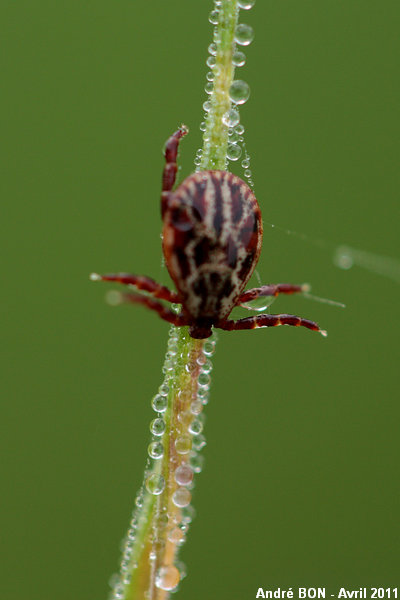
|
There is no doubt about the Dermacentor genus. This is much more complicated for the species. The fore legs are only visible up to the trochanter on this upper side view, the coxae are hidden. I will only list this one as Dermacentor sp. I have indicated Dermacentor reticulatus as there are important populations of cows in this region and sheep are missing. However there is still a doubt with Dermacentor marginatus. The large size of the shield indicates one male here. |
| [To know more about the Ornate Cow Tick] [Next picture] [Previous picture] [Top] |
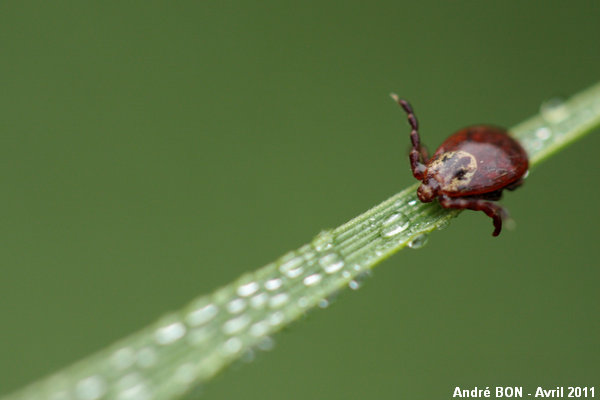
|
The size of the shield indicates one female here. Same remark as before concerning the species. There is still an important doubt between Dermacentor reticulatus and Dermacentor marginatus. |
| [To know more about the Ornate Cow Tick] [Next picture] [Previous picture] [Top] |
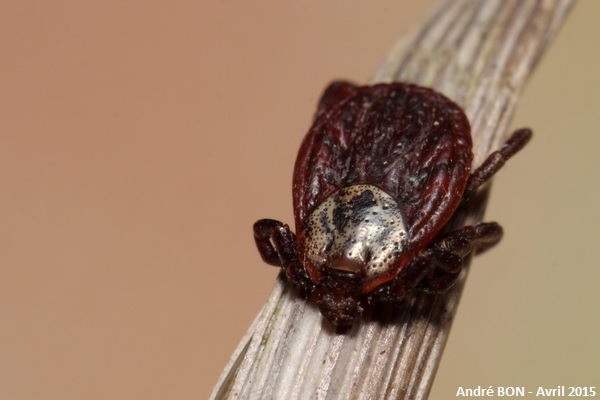
|
I have found this tick at the same place as the one shown above, that's to say in a meadow that I voluntarily leave lying fallow for biodiversity. After these observations I only walk there in long pants with high boots. To try to shoot better pictures I cut the dry stem supporting this tick to take it inside the house. |
| [To know more about the Ornate Cow Tick] [Next picture] [Previous picture] [Top] |
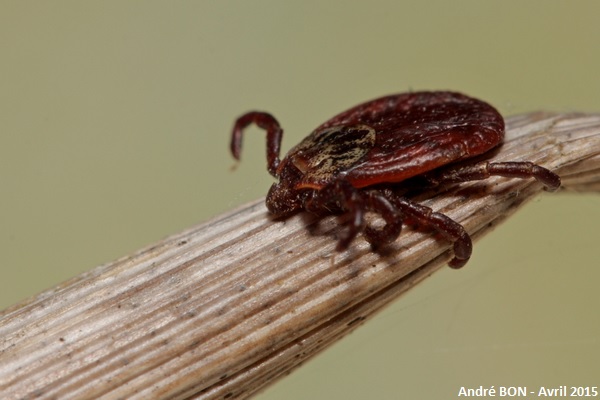
|
The small size shield indicates one female and the flattened body indicates that it is looking for a host to feed on its blood. |
| [To know more about the Ornate Cow Tick] [Next picture] [Previous picture] [Top] |
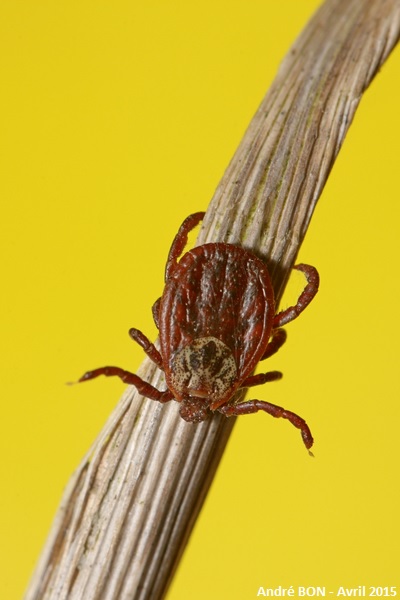
|
Small try with different background colour and angle of view. My observations and pictures of wildlife have no scientific purpose and I try to do my best to respect all animal species. So I have delicately positioned this tick back to its natural habitat. My relatives were surprised about that. |
| [To know more about the Ornate Cow Tick] [Next picture] [Previous picture] [Top] |
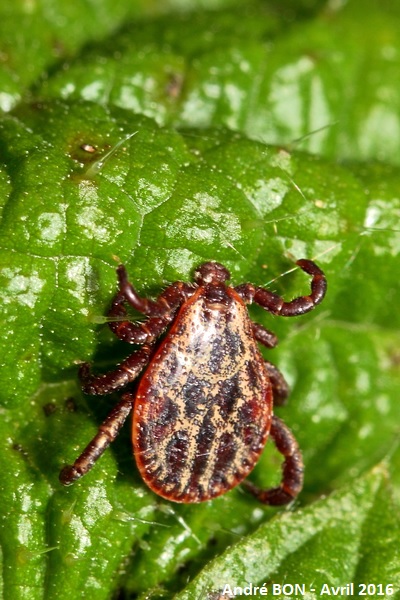
|
Here is one male. I still need to improve my flash diffuser for those bright bodied subjects. |
| [To know more about the Ornate Cow Tick] [Previous picture] [Top] |
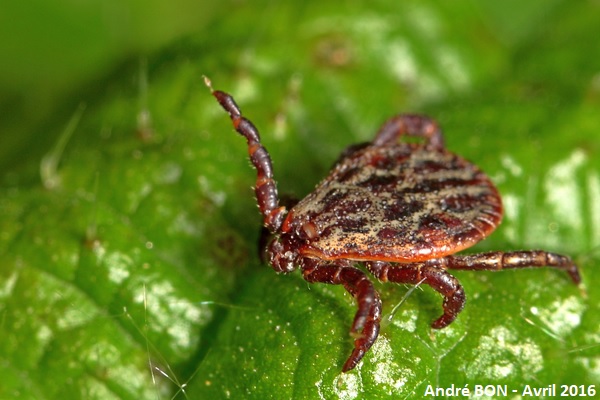
|
You can clearly see the small hooks at the tip of the legs to attach to the parasited species. |